Karver hook, yes or no? The Saona is fitted with a square-head mainsail. That looks great and ensures a better performance. The problem with a square head mainsail is that the halyard has to be disconnected to lower the last bit of the main sail. Reconnecting requires climbing the mast, trying to hold on and attaching the shackle. That would work fine if you have four arms. To avoid this problem, French hardware manufacturer Karver developed a device called the ‘ Karver hook’. It is a hook with a built-in sheave. When you hoist the sail, it automatically hooks onto the head of the mainsail. It works fine but there are some draw backs.
Normally the dead-end of a 2:1 halyard is attached to the end of the crane (mast top), runs through a block on the head of the sail then up, over the halyard sheave and then down through the mast to the winch. When using a Karver hook the halyard must run the other way. So the dead-end of the halyard is connected just aft of the halyard sheave, then goes down through the Karver hook, then to the aft side of the mast crane, over a halyard deflector, over the halyard sheave, down through the mast to the winch. The drawing shows what I mean. On the first masts fitted with a Karver hook, the halyard deflector ws made of Delrin. But that does not last very long. It wears out, damaging the halyard. You can order a free stainless replacement from Z-spars. Email to Rémi Gerbeaud <zspars@orange.com>. Later boats are fitted with stainless deflector blocks as standard. Don’t forget to order the upgraded gooseneck pin if you do. See the post on the gooseneck pin.
Rigging the halyard this way creates a lot of friction. The poor Karver bearings and the deflector block, which has no bearing at all, create a lot of friction. The sail will not come down very easily. Our boat was delivered without the Karver hook. I contemplated the upgrade but decided not to, because of the above reasons.
Instead I rigged a Dyneema line from the headboard car, through the eye of the mainsail, back to the headboard car and down to the second batten car. This works really great. This way I can still disconnect my main halyard and use it to suspend my pasarelle. UPDATE: the continuous pulling on the second batten car, deforms the batten receptacle over time. I have sewn an attachment point on the sail to which the dead end is now attached. This avoids the problems.



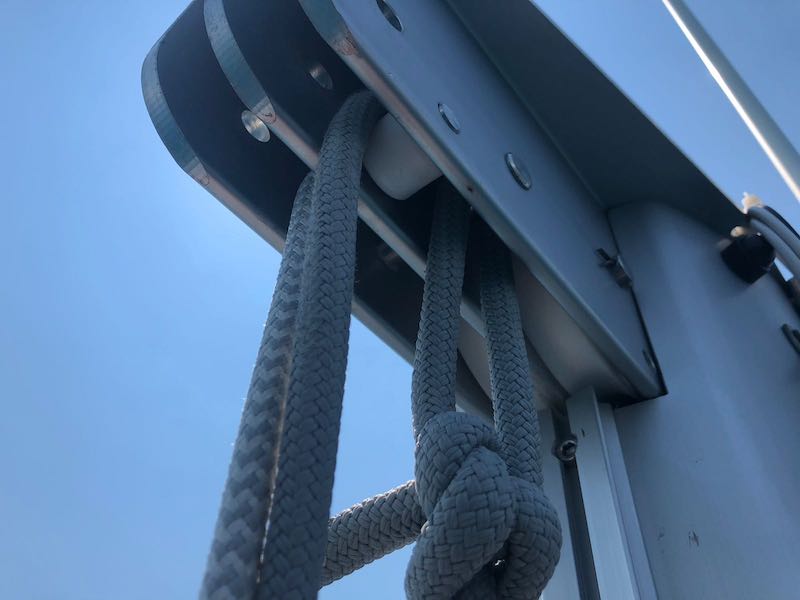

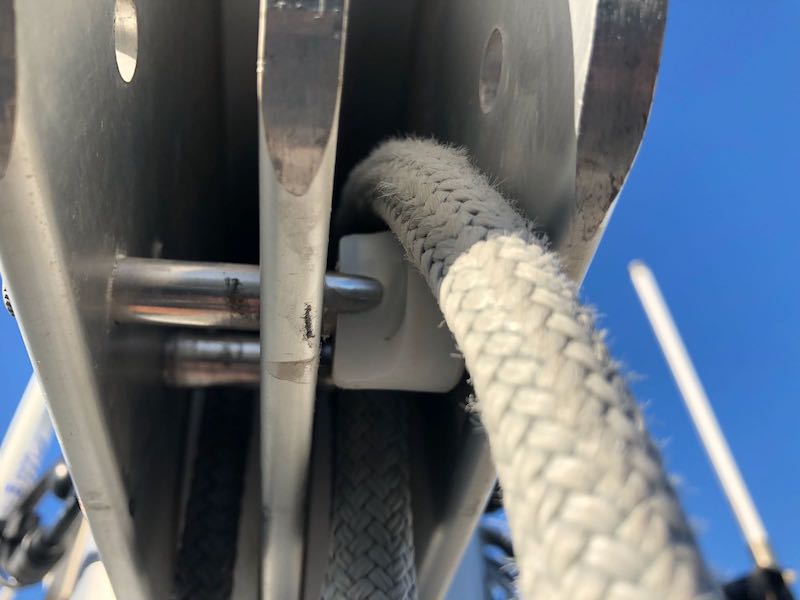
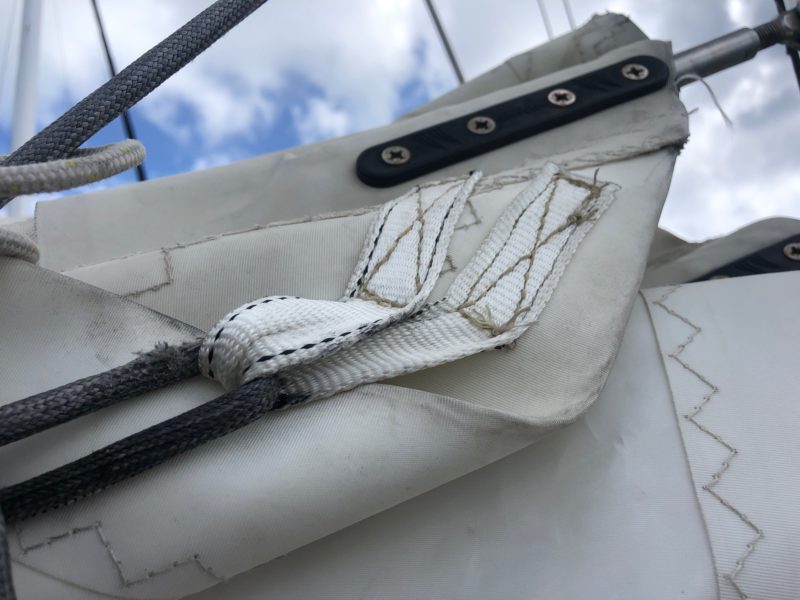
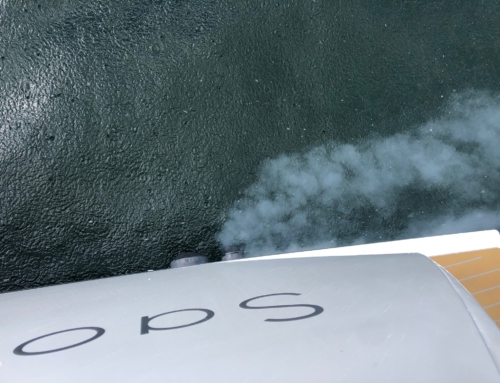
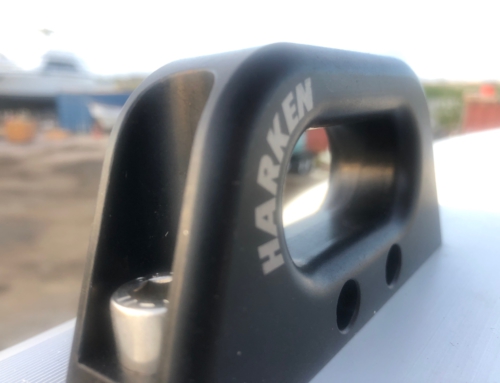
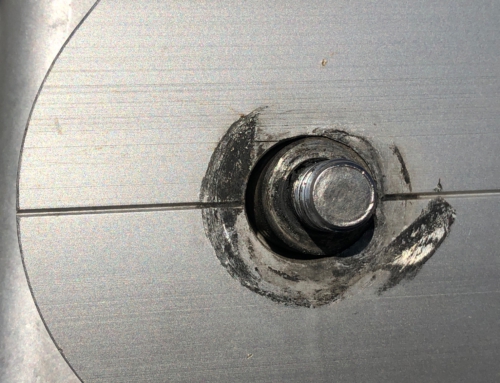
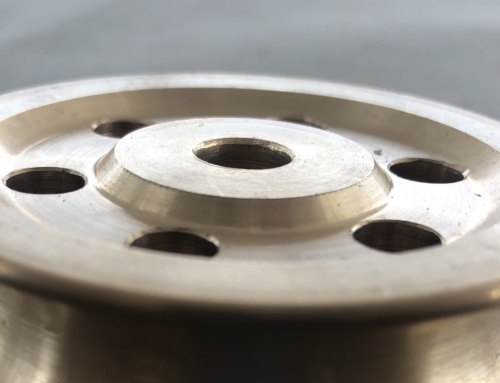
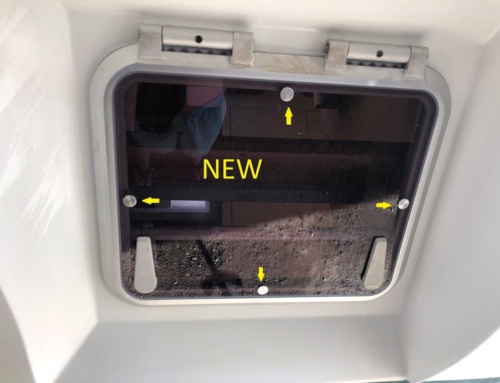
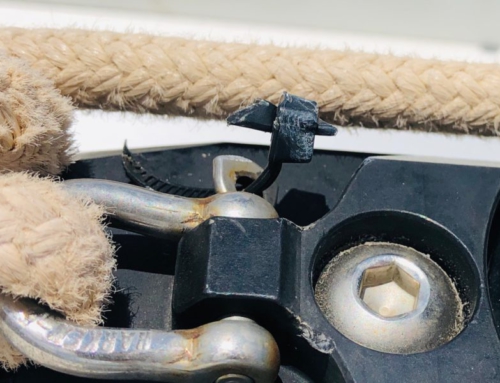
Leave A Comment